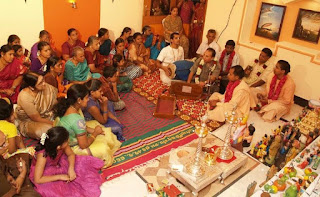BHAJANS COMMUNITY
I understand that they’re not the only five ‘community’ languages, so to speak.
Dr Singh: I suppose these five community groups took the initiative to take it up with the government.
I did Malay, for example, in the sixties. As you’re aware, Singapore has probably the most rigorous mother tongue policy in the world, and a lot depends on grades. So, there was this feeling among these minority communities that their children were being disadvantaged in having to do a mother tongue which was not their mother tongue.
So it’s just that the Malayalam community weren’t interested at the time?
Dr Singh: Yes, initially. Later on, about four or five years after, they set up their own organisation, and even wrote to the Ministry. So now they’re still in the negotiating phase, because there are a lot of requirements to be met. But once they join, they’re accepted, they’ll be streamlined with us. The system is there already. You can have 20 languages joining. No issue.
How does Tamil fit into the picture? I’ve noticed some schools don’t offer Tamil.
Dr Kaur: The moment there are Tamil students and there are enough numbers, the Planning Division actually allocates schools to open a class. So if a school isn’t offering Tamil, it means in that school’s area, the population of school-going Tamil students may have gone down.
What was the impetus for BTTSAL, then? Why a centralised organisation?
Dr Singh: Well, after this, there were nine organisations at that point in time who had their own tests and so on, and they would send the marks on to the child’s school, but the school would say, “No, sorry, we can’t recognise your marks, we don’t know which uncle or which auntie is teaching them, and we don’t know how your examination papers were set, whether the paper is valid”.
How do you do a common examination?
Dr Singh: Of course, it’s a very complex system – you first prepare the papers in English, and then you translate them into the other five languages, and then you see what items work and don’t work, and make adjustments.
How did parents respond to the new common examination?
Dr Singh: Well, after the examinations were recognised, parents’ expectations were of course raised, and they became more alert about, okay, this is being examined and that is being recognised, so what is being taught? So we had a massive issue in 2007 when parents began to scrutinise what was being taught to their children and how it was being taught.
Wow. A common curriculum!

















No comments:
Post a Comment